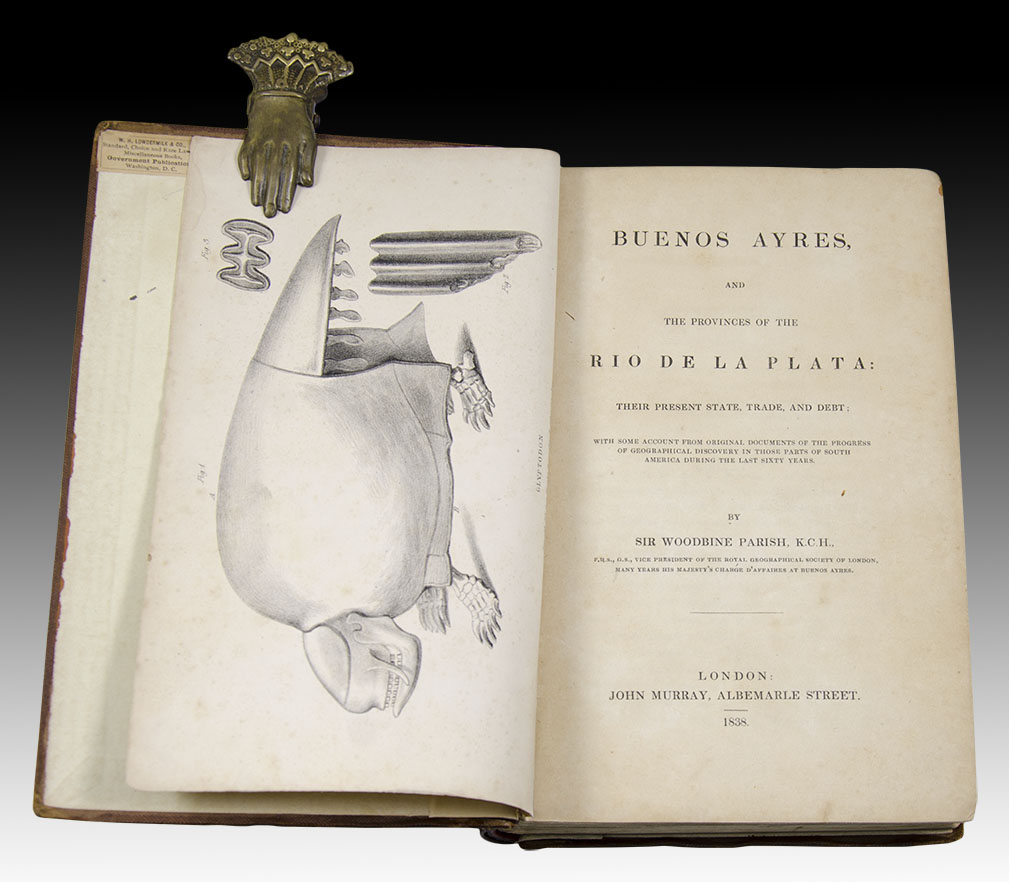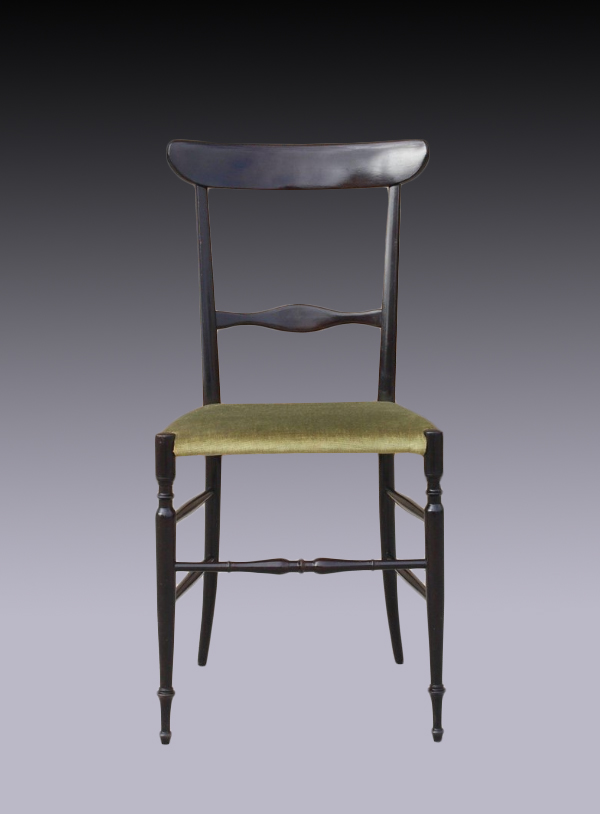One Friday in 1838, Don Pedro de Angelis wrote an obituary to Juan María Gutiérrez, surveyor of the Topographic Department that the Province had established after the Mavo Revolution. At that time, the Neapolitan polygrapher was already publishing his Collection of Works and Documents relating to the Ancient and Modern History of the Provinces of the Río de la Plata, compiling unpublished works found here and there. In the letter to Gutiérrez he referred to borrowed manuscripts, shared readings and also dealt with the poet Esteban Echeverría and the Ligurian pilot Nicolás Descalzi, astronomer of the expedition to the Río Negro and the campaign against the Indians organized by Juan Manuel de Rosas in 1833. He was grateful to the first for his help and wanted to give him a work from his library. With the second, he had spoken the day before about the copy of that map of Uruguay that they both wanted to study. Descalzi would give it to him when he returned from the excursion he had undertaken to exhume bones on the properties of Francisco Massot and the English grocery store Ana Byrne in the vicinity of Cañuelas and Saladillo.
De Angelis, before saying goodbye to Gutiérrez, added:
"as I think Mr. Echeverría says
…, looking
The deep wide channel
From a copious stream
through the straw he ran
He turned back, exclaiming,
Enraptured with joy:
There on the greenish shore,
The Neapolitan - "a joker and teller of jokes", as Echeverría himself stated in his time - transcribes with apparent carelessness these verses taken from "El pajonal", the fifth part of La Cautiva, published in 1837 among the Rimas, a work with which the poet began to build his fame. De Angelis modified just one letter [enraptured by enraptured] and with this he managed to have Descalzi take the place of María, the unfortunate woman, while the body of Brian, her husband, was replaced by a skeleton, the one that the pilot had gone out to look for. through the streams of the province. María's joy, which in the poem is linked to the discovery of a watercourse and the possibility of reviving her husband, was equal to Descalzi's joy at the discovery of an antediluvian animal. De Angelis's humor, however, would end just before the signing; grumbling, he stated between resignation and tragedy: "I will never have such happiness." And although De Angelis was - in addition to being exaggerated - a great complainer, he appealed to his intelligence, education and literary ingenuity to laugh at the fate that had befallen him due to a miscalculation or for trusting in the South American future. Barefoot had arrived in Buenos Aires in 1821 and De Angelis in 1827, hired by a government that, when they set foot in port, no longer existed.
Josefa Sabor, in her book about De Angelis [3], stated that Descalzi was looking for fossils on behalf of the former, who, in this way, would have introduced him into the business of Pampas bones to sell them to local and European collectors. But, by 1838, De Angelis already considered him the "greatest slanderer of Buenos Aires." It is also true that, reviewing the list of measurements undertaken in those years in the province, the name of Descalzi appears frequently, as does that of Manuel Eguía, another fossil collector and, now old and almost blind, future protector of Florentino Ameghino. In fact, it is a fairly frequent association, in which Gutiérrez also participates, even if it is in a literary way: going out to explore the terrain of Buenos Aires. Aires, especially in times of drought, implied (and implies, as the newspaper news confirms), confronting those enormous bones that sprout from the dry river beds or their banks. Given the quarrelsome character of the Genoese pilot - entangled in several trials and lawsuits - and De Angelis' lack of courage, it is not surprising that this association did not last long, that Descalzi preferred to offer his bones to others and that, finally, De Angelis entrusted his extraction to people with less autonomy for the transactions fossiliferous.
At the same time and in England, Woodbine Parish, the first English consul in these regions, was trying to finish his book on Buenos Aires and the Province of Plata [4], where, in the chapter referring to geology, he had included a section on the megatherium. . That is, that genus of fossil mammal created by Georges Cuvier in 1796, from the plates arrived from Madrid and based on the skeleton mounted in the Royal Cabinet of that capital with the bones sent from Luján at the end of the 18th century.
Parish had arrived in Plata with the request to obtain a skeleton similar to the one from Madrid - the only one of his species - for the university collections and museums of his country, which he fulfilled by shipping a series of bones from the Río Salado ranches. . Among them were pieces of a type of bone armor whose owner was unknown, as can be seen in the descriptions of the consignment made in 1832. Parish, when writing this chapter, was unsure who to follow: some anatomists attributed it to him. to the megatherium; Others, however, thought that it was the shell of another animal of enormous dimensions but from the armadillo family. When he had the chapter ready and having leaned towards the armed nature of the megatherium, Parish received a letter from Buenos Aires that he quickly put in the hands of Richard Owen, in charge of the description of the fossil mammals brought by Charles Darwin after his trip in the Beagle. The letter, in this case, came from Charles Griffiths, Parish's replacement, who reported having received a note from Descalzi dated 1838 announcing that he had brought the bones of an immense megatherium to the city. Griffiths, who was aware of the missing bones in the English skeleton, showed up at Descalzi's house and verified that he had the missing pelvis. According to Marcello Cerruti (1808-1897), future senator of the Kingdom of Piedmont, the secretary of the British consular office in Buenos Aires mentioned that Descalzi also possessed the skeleton of an “Elephantine Mulita.” Both had been found at a certain depth under the old bed of a dry stream, just as De Angelis mocked.
Drawing of the glyptodont made by Descalzi.
Descalzi asked for two thousand silver dollars for each of the skeletons, but, Griifiths added, Henri Picolet d'Hermillon, the Sardinian consul, had already reached an agreement with the Genoese, whose reward, according to Cerruti, was a royal decoration. (which she never obtained) or the admission of her daughter to the Royal College of Noble Ladies of Turin. Descalzi, for his part, agreed to send the skeletons to the Museum of Mineralogy in the capital of the Kingdom of Sardinia and Piedmont. The English had to settle for a tooth and a drawing that, when push came to shove, were more than enough: with them, as Cuvier had previously done with the skeleton of the corpulent and rare animal from Madrid, Richard Owen would create the genus Glyptodon. Parish was quick to include it, as an annex with additional numbering to the book already designed. To the Descalzi drawing - which Parish attached off the page at the beginning - they added the legs of another specimen and an image of the tooth received from Buenos Aires. With this, the megatherium lost its shell and the glyptodont, thus dressed, went out to walk around the world.
The Sardinian consul, on the other hand, had the skeleton arrive in Turin a decade later, promising Descalzi a series of favors for his Argentine and Genoese families: the Descalzis, in fact, were from Chiavari, a city on the Ligurian coast. , where since the 18th century there had been an Economic Society that promoted the development of local industry. Among those favored by said Society was Nicola's father, G. Gaetano Descalzi (1767-1855), who in 1838 was still alive and enjoyed renown and a certain fortune as a carpenter and furniture maker. G. G. Descalzi was the builder of the so-called bell chair, awarded by the Economic Society in 1806 and which continues to be manufactured to this day by workshops in the area. It is an iconic object of the art of Ligurian carpentry, whose very light appearance masks its two main characteristics: robustness and elasticity. In fact, the pilot Nicola Descalzi, trained within his family, but also in nautical and mathematical arts, was a good carpenter, with the skills and knowledge necessary to assemble fossil skeletons, another frequent constellation in these companies. : Parish, for example, sent an American cabinetmaker to recover the Salado fossils.
Image of the glyptodont published by Parish based on Descalzi's sketch with the addition of the legs and an image of the tooth on which the genus is based.
The testimonies collected by Cerruti suggest that Descalzi had assembled the two skeletons in his house: probably, the sketch sent to London was either a representation of how he had built it or, at least, the project of how he envisioned the assembly of his Elephantine mule. His skills as a draftsman and as a builder of boats and furniture add a new dimension to the story of the Glyptodont, an animal named in London but whose shape was first developed in Buenos Aires combining knowledge about the local fauna (the shape of the mulita). with the skills acquired on the Ligurian coast, where Descalzi learned to shape these four-legged structures, combining materials and tensions, forms and functions.
Notes:
1. Immovable: old word that is little used today, which refers to immovable.
2. Echeverría's original says:
"…and looking
the deep wide channel
of a stream that is copious
through the straw he ran,
he turned back, exclaiming
enraptured with joy:
-I thank you, Supreme God!
Brian is saved, I fear nothing.
He soon reaches the high nest
where his beloved lies,
on his shoulders he carries him,
and with excessive vigor
He carries, carries, at a slow pace,
to the rescue port
that precious cargo.
There on the green shore
The immoveable body poses.
3. Josefa Sabor, Pedro De Ángelis and the origins of Argentine bibliography. Bio-bibliographic essay, Buenos Aires, Ediciones Solar, 1995.
4. The first version of this work was published in London, in 1839, Buenos Ayres and the Provinces of the Rio de la Plata. In 1852 a new edition came to light, augmented with more information. As soon as the first copies of this printing arrived in Buenos Aires, the bookseller and editor Benito Hortelano arranged for its translation into Spanish, a work carried out by Justo Maeso who added his own notes. In this city it was published in that same year of 1852 and there was another edition prepared by the bookseller and publisher Casavalle the following year.
* Special for Hilario. Arts Letters Trades

